
The Australian Capital Territory (ACT), known as the Federal Capital Territory (FCT) until 1938, is a federal territory of Australia. Canberra, the capital city of Australia, is located in this territory. It is located in southeastern Australian mainland as an enclave completely within the state of New South Wales. Founded after Federation as the seat of government for the new nation, the territory hosts the headquarters of all important institutions of the Australian Government.

Canberra is the capital city of Australia. Founded following the federation of the colonies of Australia as the seat of government for the new nation, it is Australia's largest inland city and the eighth-largest Australian city overall. The city is located at the northern end of the Australian Capital Territory at the northern tip of the Australian Alps, the country's highest mountain range. As of June 2022, Canberra's estimated population was 456,692.
The Australian Capital Territory as of 2014 contains 46 separate protected areas with a total land area of 1,302 km2 (503 sq mi) or 55.5% of the territory's area, and which managed by Territory and Municipal Services of the ACT government:

Red Hill is a suburb of Canberra, Australian Capital Territory, Australia. The suburb is named after the northernmost hill of the ridge to the west of the suburb. The ridge is a reserve and managed as part of the Canberra Nature Park. The hill is an element of the central Canberra design axis.
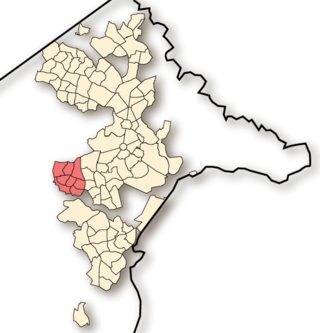
Weston Creek is a district in the Australian Capital Territory in Australia. The district is subdivided into divisions (suburbs), sections and blocks. The district comprises eight residential suburbs, situated to the west of the Woden Valley district and approximately 13 kilometres (8.1 mi) southwest of the Canberra City centre. Situated adjacent to the district was the large Stromlo Forest pine plantation until the forest was destroyed by bushfires in 2001 and 2003.
The Leader of the Opposition of the Australian Capital Territory, is an official role usually occupied by the leader of the second largest party or coalition in the Australian Capital Territory Legislative Assembly. The title is conferred under Standing Order 5A of the ACT Legislative Assembly, that the Leader of the Opposition shall be the leader of the largest non-Government party, with the consent of that member. In the event of an equal number of members of the second largest party, the Assembly shall vote and elect a Leader of the Opposition.

Canberra Museum and Gallery is an art gallery and museum in Canberra, the capital of Australia. It is located on London Circuit, in Civic in the centre of the city. The gallery was opened on 13 February 1998.
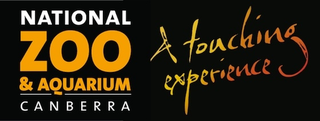
The National Zoo and Aquarium is a privately owned 19-hectare (47-acre) zoo and aquarium in the Australian capital city of Canberra. It is located in Yarralumla at the western end of Lake Burley Griffin, next to Scrivener Dam. It recently had a major expansion, with 12 ha of open range exhibits opened in May 2017.
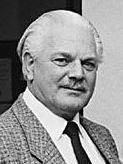
Trevor Thomas Kaine, was an Australian politician who served as Chief Minister of the Australian Capital Territory from 1989 to 1991. Kaine was elected into a multi-member single electorate in the unicameral Australian Capital Territory Legislative Assembly, from 1989 to 2001, initially as a member of the Liberal Party and later as an independent.

A brumby is a free-roaming feral horse in Australia. Although found in many areas around the country, the best-known brumbies are found in the Australian Alps region. Today, most of them are found in the Northern Territory, with the second largest population in Queensland. A group of brumbies is known as a "mob" or "band".

Australian rules football in the Australian Capital Territory has been played continuously since 1911 and was the most popular football code in the nation's capital Canberra between 1978 and 1982. The current governing body is AFL Canberra founded 1922, while the development body is AFL NSW/ACT established in 1999.

The ANU School of Music is a school in the Research School of Humanities and the Arts, which forms part of the College of Arts and Social Sciences of the Australian National University. It consists of four buildings, including the main School of Music building – which contains Llewellyn Hall – and the Peter Karmel Building.
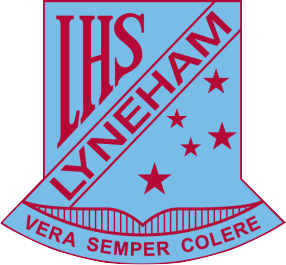
Lyneham High School is a public secondary school in the Australian capital of Canberra that was founded in 1959. Located in the suburb of Lyneham, it is one of the only large public high schools in the immediate area. The school has a performing arts programs which includes concert and jazz bands, performance-based music classes and drama and dance classes.

Terry Snow is an Australian businessman, accountant, entrepreneur, and philanthropist based in Canberra in the Australian Capital Territory.

Feral goats are an invasive animal species in Australia. First arriving in the 18th century with European settlers, feral goat populations originated from escaped domestic individuals. Today, feral goats are found across Australia, where they cause economic and environmental damage through overgrazing and competition with livestock and native marsupials.
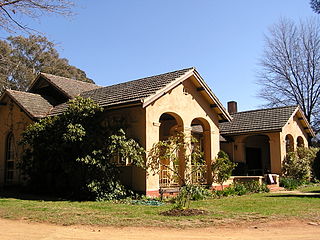
Calthorpes' House is a heritage-listed house located at 24 Mugga Way, Red Hill, Canberra, Australian Capital Territory.
The ACT Labor Party, officially known as the Australian Labor Party (Australian Capital Territory Branch) and commonly referred to simply as ACT Labor, is the ACT branch of the Australian Labor Party (ALP). The branch is the current ruling party in the Capital Territory and is led by Andrew Barr, who has concurrently served as chief minister of the Australian Capital Territory since 2014. It is one of two major parties in the unicameral Australian Capital Territory Legislative Assembly.

Constance "Connie" Johnson was an Australian philanthropist. She suffered from bone cancer at age 11, uterine cancer at age 22 and finally breast cancer at age 33. Johnson founded the Love Your Sister charity in 2012 with her brother Samuel Johnson, aiming to raise $10 million for cancer research. At the time of her death the charity had raised almost $6 million. She was awarded the Medal of the Order of Australia on 7 September 2017 and died the following day, aged 40.

Energy produced in the Australian Capital Territory mainly consists of solar electricity. Electricity consumed in the Australian Capital Territory mainly comes from the national power grid through substations at Holt and Fyshwick. The ACT currently mandates that 100 percent of its electricity, will be supplied from renewable sources by 2020. The ACT has four solar farms capable of generating about 56.3 megawatts. From 1913 until the mid 1950s some power was produced from the Kingston Powerhouse, a thermal power station in Kingston.

Mugga Lane Solar Park is a photovoltaic solar power station at Hume in the Australian Capital Territory.

















